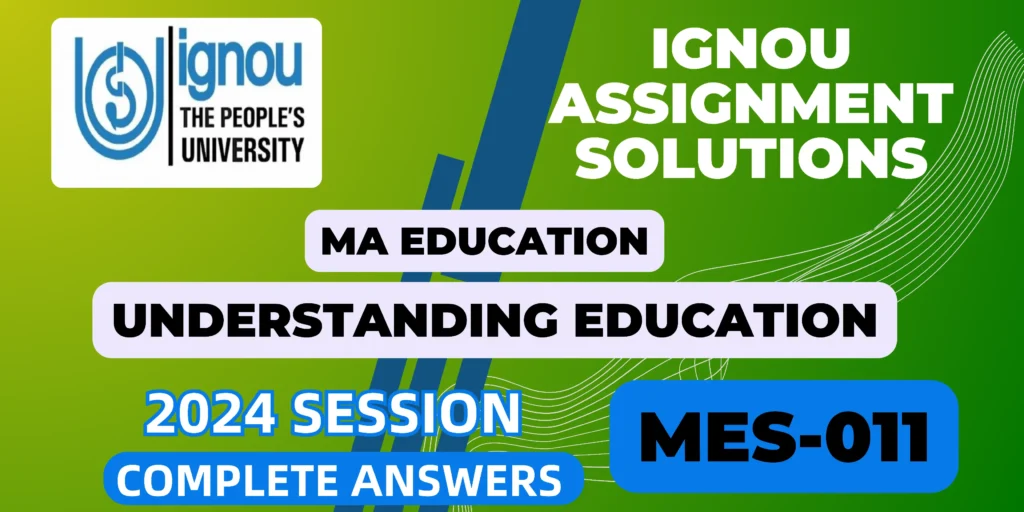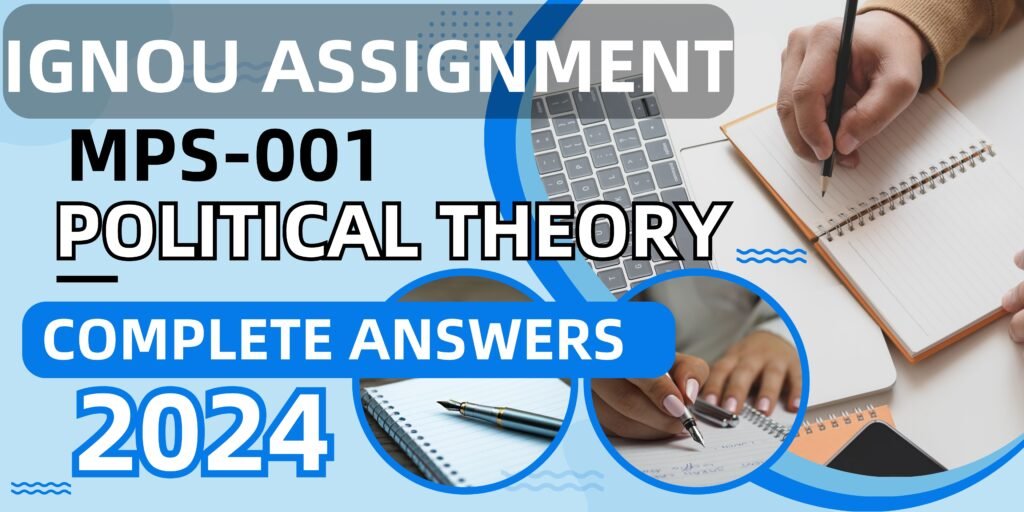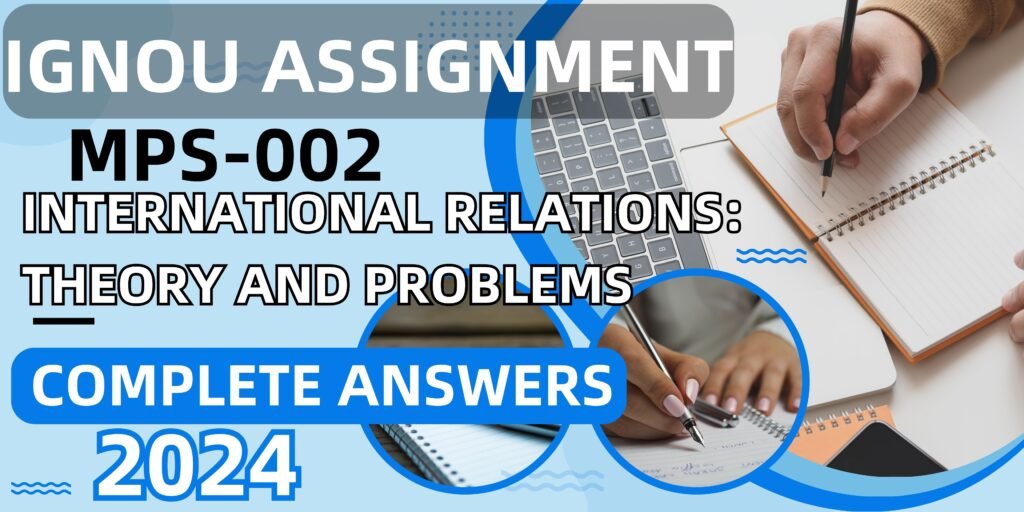IGNOU MES 011 Assignment Solution
MES-011
UNDERSTANDING EDUCATION
January-2024 Session & July 2024 Session
Answer the following questions in about 500 words each:
- Differentiate between individual and social aims of education. Discuss the synthesis between individual and social aims of education with suitable examples.
- Critically analyze the features of Ancient Indian Education with special reference to Vedic, Post-Vedic and Brahmanic Education systems.
- Why and how is education dependent on political decision making for its smooth operations? Discuss with suitable illustrations.
Answer
- Differentiate between individual and social aims of education. Discuss the synthesis between individual and social aims of education with suitable examples.
Differentiating Between Individual and Social Aims of Education
Education plays a pivotal role in shaping both individuals and society. The aims of education can be broadly categorized into two distinct yet interrelated goals: individual aims and social aims. Understanding these aims and how they can be synthesized provides a comprehensive view of education’s role in personal and societal development.
Individual Aims of Education
Individual aims focus on the personal development of each learner. The primary goal is to cultivate the full potential of an individual, enabling them to lead a fulfilling and meaningful life. Education aims to nurture the intellectual, emotional, physical, and spiritual aspects of a person. It empowers individuals with the knowledge, skills, values, and attitudes necessary to pursue their interests, talents, and aspirations.
Key aspects of individual aims include:
1. Self-Realization: Education encourages individuals to discover their innate talents and abilities, helping them to reach their highest potential. For example, a student with a passion for art may be guided to explore and develop their creativity through specialized training and exposure to various art forms.
2. Personal Autonomy: Individual aims emphasize the development of independent thinking and decision-making skills. Education fosters critical thinking, enabling individuals to make informed choices in their personal and professional lives.
3. Moral and Ethical Development: Education helps individuals develop a strong sense of ethics and morality, guiding them to distinguish between right and wrong and to act with integrity in their interactions with others.
4. Emotional and Social Well-being: Education also focuses on the emotional and social development of individuals, equipping them with the skills to manage relationships, cope with stress, and contribute positively to their communities.
Social Aims of Education
Social aims, on the other hand, emphasize the role of education in serving society. The primary goal is to prepare individuals to contribute to the collective well-being and progress of the community and nation. Education aims to promote social cohesion, cultural transmission, and the development of responsible citizens who can participate effectively in the social, economic, and political life of their society.
Key aspects of social aims include:
1. Social Cohesion and Integration: Education fosters a sense of belonging and unity among individuals from diverse backgrounds. By promoting shared values, norms, and traditions, education helps to create a harmonious and inclusive society.
2. Cultural Transmission: Education plays a vital role in preserving and transmitting cultural heritage from one generation to the next. It ensures that individuals are aware of their cultural identity and heritage, enabling them to contribute to the cultural enrichment of society.
3. Economic Development: Education prepares individuals for the workforce, equipping them with the skills and knowledge necessary to contribute to the economic development of their society. By producing a skilled and competent workforce, education drives innovation, productivity, and economic growth.
4. Civic Responsibility: Social aims emphasize the importance of educating individuals to be responsible citizens who actively participate in the democratic process and contribute to the common good. Education fosters an understanding of civic duties, rights, and responsibilities, promoting active engagement in community and national affairs.
Synthesis Between Individual and Social Aims of Education
While individual and social aims of education may seem distinct, they are deeply interconnected. A balanced education system must harmonize these aims, recognizing that the development of well-rounded individuals is essential for the progress and well-being of society, and vice versa. (Continue…)
- Critically analyze the features of Ancient Indian Education with special reference to Vedic, Post-Vedic and Brahmanic Education systems.
Introduction
Ancient Indian education is a rich and complex tapestry, deeply rooted in the cultural, religious, and philosophical traditions of the time. The education system evolved significantly over the centuries, particularly during the Vedic, Post-Vedic, and Brahmanic periods. Each of these periods contributed uniquely to the development of Indian education, shaping the intellectual, spiritual, and social life of the subcontinent. This analysis critically examines the features of education during these three significant periods, highlighting their characteristics, strengths, and limitations.
Vedic Education
Features
1. Religious Foundation: The Vedic period, roughly from 1500 BCE to 600 BCE, saw education primarily centered around the study of the Vedas—Rigveda, Samaveda, Yajurveda, and Atharvaveda. These texts formed the bedrock of religious, moral, and philosophical teachings, and education was primarily aimed at preserving and transmitting this knowledge.
2. Gurukul System: Education was imparted through the Gurukul system, where students (Brahmacharis) lived with their teacher (Guru) in an ashram. This residential form of education emphasized the close relationship between the Guru and the student, fostering not just intellectual growth but also moral and spiritual development.
3. Oral Tradition: The Vedic education system relied heavily on oral transmission of knowledge. The students memorized the Vedas through recitation, emphasizing the accuracy and preservation of these sacred texts. (Continue….)
Click Here for Complete Assignment Answer
Download Complete Assignment Answer PDF
-
MA Education IGNOU MES-011 Assignment Solution
Original price was: ₹299.00.₹29.00Current price is: ₹29.00. Add to cart -
MA Education IGNOU MES-012 Assignment Solution
Original price was: ₹299.00.₹29.00Current price is: ₹29.00. Add to cart -
MA Education IGNOU MES-013 Assignment Solution
Original price was: ₹299.00.₹29.00Current price is: ₹29.00. Add to cart -
MA Education IGNOU MES-014 Assignment Solution
Original price was: ₹299.00.₹29.00Current price is: ₹29.00. Add to cart -
MA Education IGNOU MES-015 Assignment Solution
Original price was: ₹299.00.₹29.00Current price is: ₹29.00. Add to cart -
MA Education IGNOU MES-016 Assignment Solution
Original price was: ₹299.00.₹29.00Current price is: ₹29.00. Add to cart
Click Here download Assignment Questions
ignou mes 011 assignment solution ignou mes 011 assignment solution ignou mes 011 assignment solution ignou mes 011 assignment solution ignou mes 011 assignment solution ignou mes 011 assignment solution ignou mes 011 assignment solution ignou mes 011 assignment solution ignou mes 011 assignment solution ignou mes 011 assignment solution ignou mes 011 assignment solution ignou mes 011 assignment solution









